Bonsai is a classic Japanese art form that evolved out of the ancient Chinese art of penjing. Both bonsai and penjing strive to create miniature trees through careful plant training and pruning. The goal is to preserve the natural look and growth of the plant, while encouraging the plant to grow small enough that it can be kept in containers.
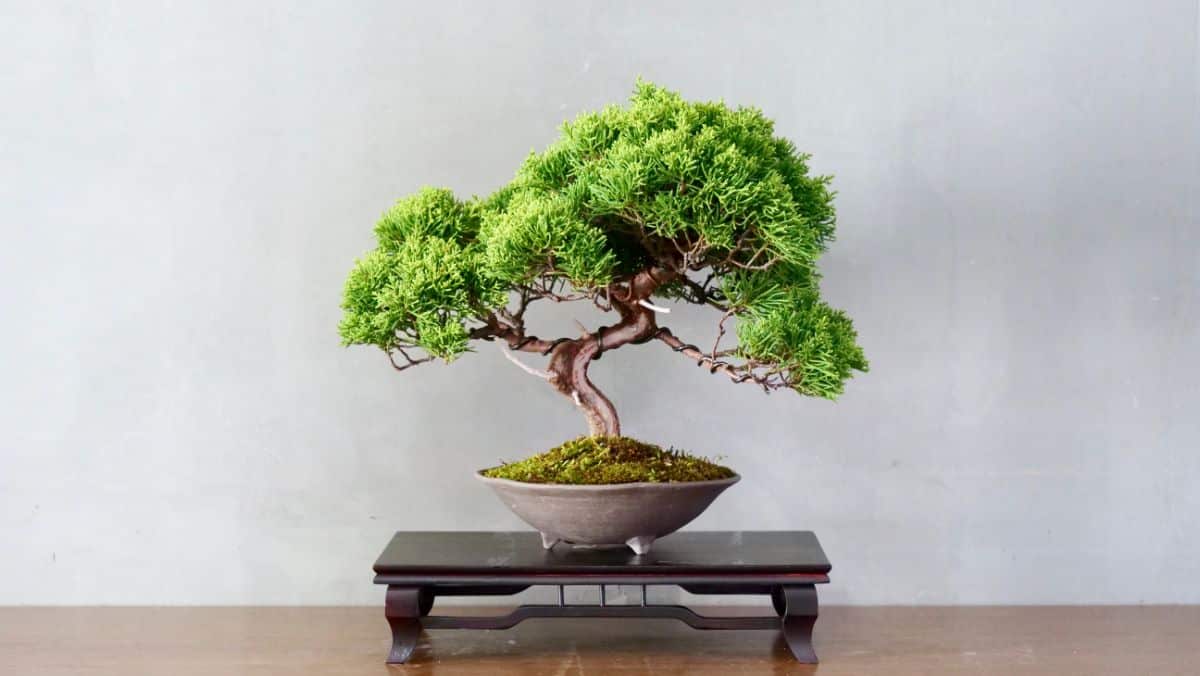
Traditional bonsai requires patience, and it can take 10 or more years to train a bonsai tree, although many specimens require 30 or more years of growth. While that may sound intimidating, there are other faster-growing plants that are appropriate for bonsai and will give you results a bit sooner. While bonsai can never be rushed, if you choose the right beginner-friendly plants, you can set yourself up for a more successful bonsai experience.
In this guide, you’ll find a list of the best bonsais to grow if you’re new to the art form. These plants are easier to find than some other bonsais species, and many are also faster growing, which will help you form a stunning bonsai plant in less time. With these adaptable plants in mind, there’s never been a better time to start a bonsai!
Jump to:
- 10 best beginner plants to grow for bonsai
- 1. Ficus (Ficus retusa)
- 2. Elephant bush (Portulacaria afra)
- 3. Cotoneaster (Cotoneaster spp.)
- 4. Boxwood (Buxus spp.)
- 5. Rosemary (Salvia rosmarinus)
- 6. Chinese elm (Ulmus parvifolia)
- 7. Juniper (Juniperus spp.)
- 8. Jade (Crassula ovata)
- 9. Azalea (Rhododendron spp.)
- 10. Pine (Pinus spp.)
- What do you need to get started with bonsai?
- Frequently asked questions
- Summary
10 best beginner plants to grow for bonsai
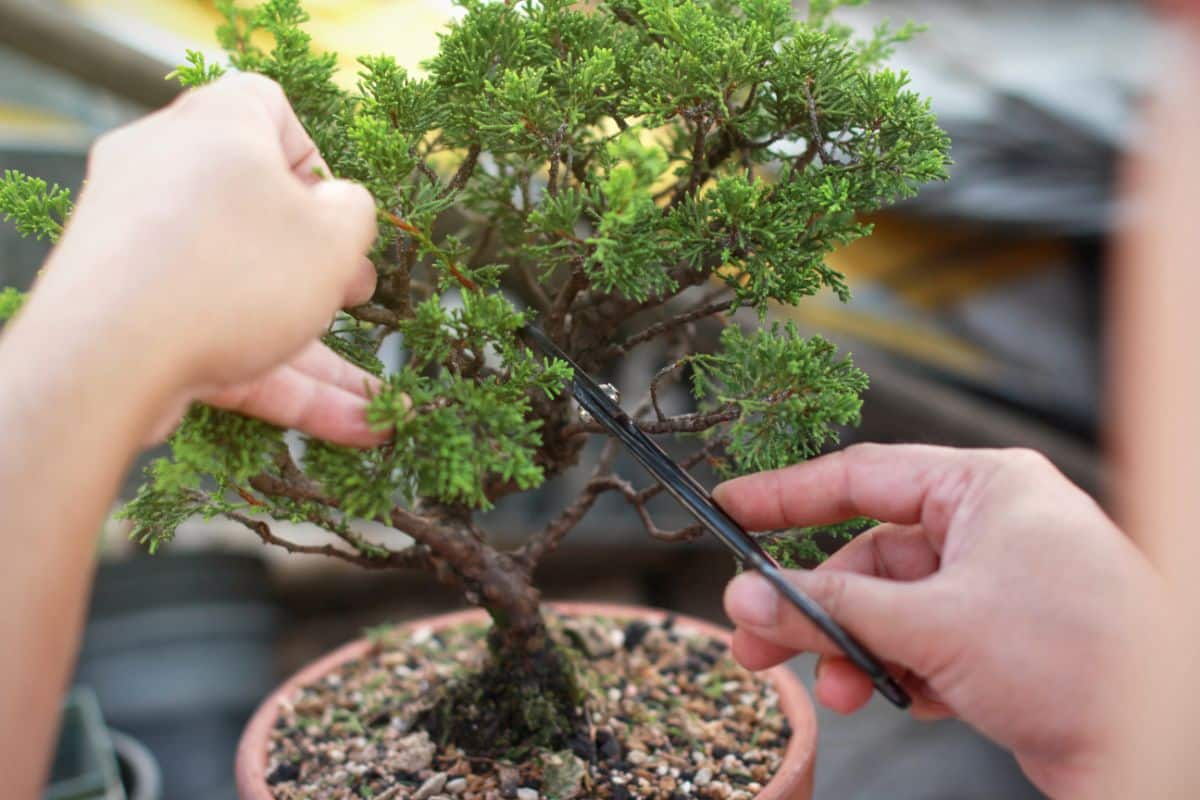
Many of the best bonsai plants actually grow quite large in the wild, which means they’ll produce larger stems as bonsais, which can look like miniature tree trunks. Top bonsai plants also often have mini leaves, which won’t overwhelm the plant or cover up all the careful work you’ve done while training your bonsai. Although there are other bonsai plants you can grow, these are a few of the most adaptable species that are just right for beginners!
1. Ficus (Ficus retusa)
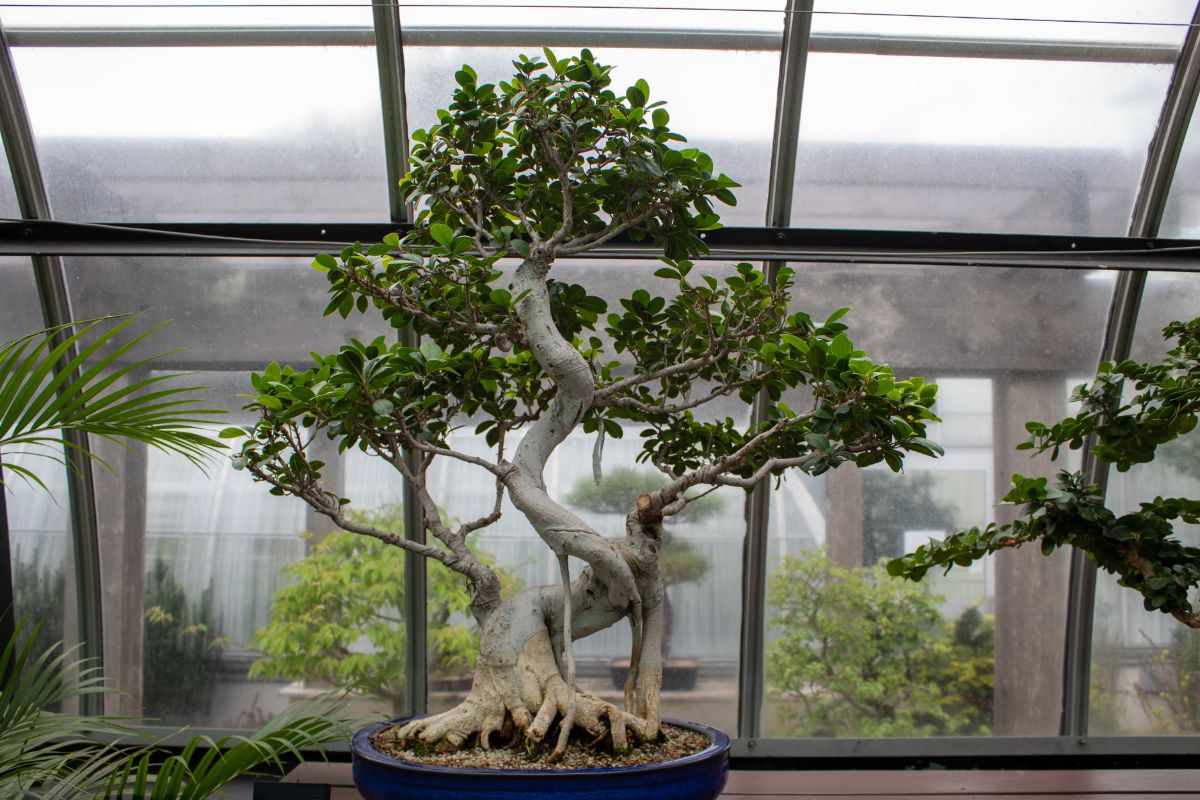
| Plant name: | Ficus |
| Light requirements: | Bright light |
| Water requirements: | High to moderate |
| Indoors or outdoors? | Indoors, can be kept outdoors in spring and summer |
| Outdoor growing zone: | Zone 10 and 11 |
Many bonsai species don’t grow well indoors, but Ficus plants are usually kept as houseplants, so you won’t need to worry about keeping them inside as a bonsai. Ficus is also more forgiving in terms of watering than some other bonsai specimens, and they are less likely to react badly if you accidentally over- or underwater them a bit. Still, it’s a good idea to provide Ficus plants with consistent watering to avoid leaf drop and other signs of plant stress.
While there are different Ficus types that lend themselves to bonsai, Ficus retusa is a top choice for beginners. This plant is hardy, with small, glossy green leaves and flexible stems that can be wired into place with ease. However, Ficus retusa does prefer higher than average humidity levels, so it will benefit from the addition of a pebble tray or nearby humidifier.
2. Elephant bush (Portulacaria afra)
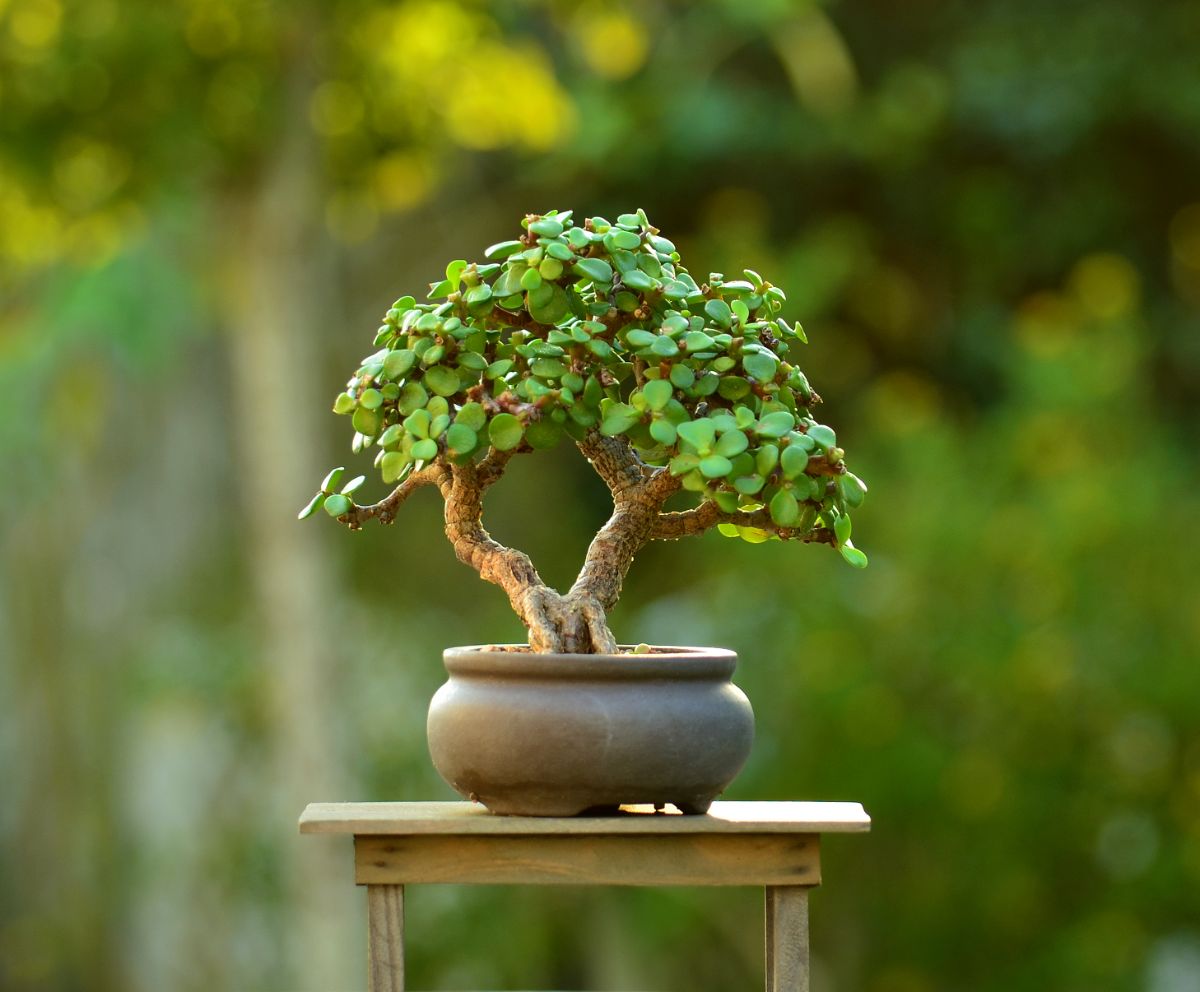
| Plant name: | Elephant bush |
| Light requirements: | Bright, indirect light |
| Water requirements: | Low |
| Indoors or outdoors? | Indoors |
| Outdoor growing zone: | N/A |
In nature, elephant bushes can grow quite large and max out at around 15’ tall. When kept in pots, these easy-going plants make perfect pint-sized bonsais, and they don’t demand extra humidity. In fact, elephant bush plants are actually succulents, so they have low watering needs, and they can handle a bit of drought too.
Elephant bushes have small, fleshy leaves that come in either solid green or variegated coloring. The stem is also fleshy, but it darkens as it ages and can become covered in a corky bark that makes it look even more tree-like in a bonsai pot. These plants are light lovers, though, and they will need lots of bright light, but they should grow happily on sunny windowsills.
3. Cotoneaster (Cotoneaster spp.)
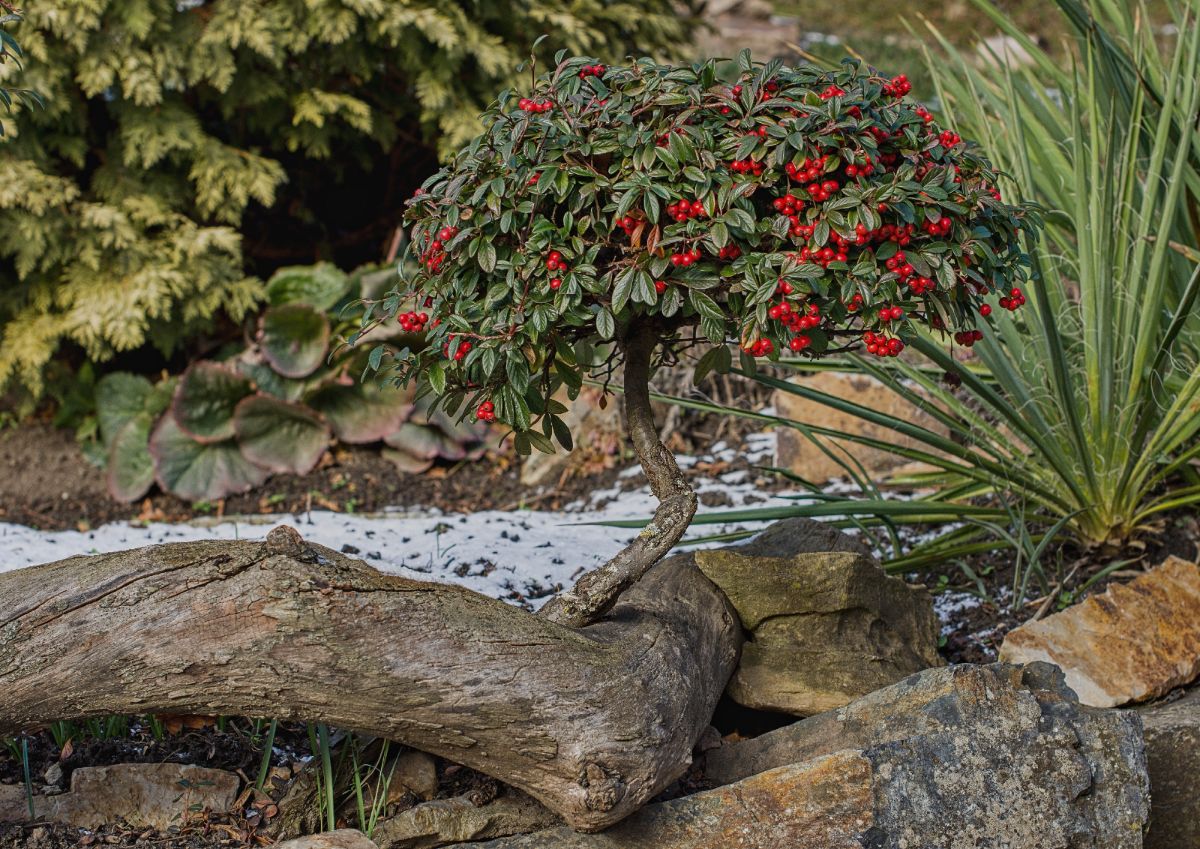
| Plant name: | Cotoneaster |
| Light requirements: | Full sun to part shade |
| Water requirements: | Moderate |
| Indoors or outdoors? | Outdoors, can be kept in unheated shed or outbuilding in winter for extra protection |
| Outdoor growing zone: | Zones 5 to 8 |
Cotoneasters are hardy plants, and they are often considered to be the perfect bonsai plant by experts. In the wild, mature cotoneasters grow to about 7’ tall, but they can be kept much smaller with frequent pruning. These plants are also cold-hardy, and they can be kept outdoors all winter long in zones 5 and up, which means you won’t need to worry about your bonsai much during the winter months!
Cotoneasters are ideal plants for shaping into miniature tree forms for a number of reasons; however, most bonsai enthusiasts rave about their tiny leaves that are perfectly sized for bonsai. Cotoneasters also provide year-round interest. These plants bloom small, white or pink flowers in spring and later burst into color in autumn with bright red berries that look like tiny fruit on your mini tree!
4. Boxwood (Buxus spp.)

| Plant name: | Boxwood |
| Light requirements: | Full sun to part shade |
| Water requirements: | Moderate |
| Indoors or outdoors? | Outdoors |
| Outdoor growing zone: | Zones 5 to 9 |
Boxwoods are commonly kept as outdoor plants in formal gardens, and they can be pruned easily into topiaries, hedges, and other fun shapes. The fact that boxwoods are simple to prune is one of the main reasons why boxwoods are good for bonsai. But these plants are also fast-growing, which can help you correct issues with your bonsai more quickly and produce a finished bonsai sooner as well.
While there are different boxwoods that can work for bonsai, dwarf specimens are usually the best choice. Varieties like ‘Harland,’ ‘Littleleaf,’ and ‘Kingsville Dwarf’ only grow to about 1 ½ to 2’ tall, and they can be kept smaller with pruning. Boxwoods are well known for their small, glossy, evergreen leaves, and they can thrive outdoors in zones 5 to 9.
5. Rosemary (Salvia rosmarinus)
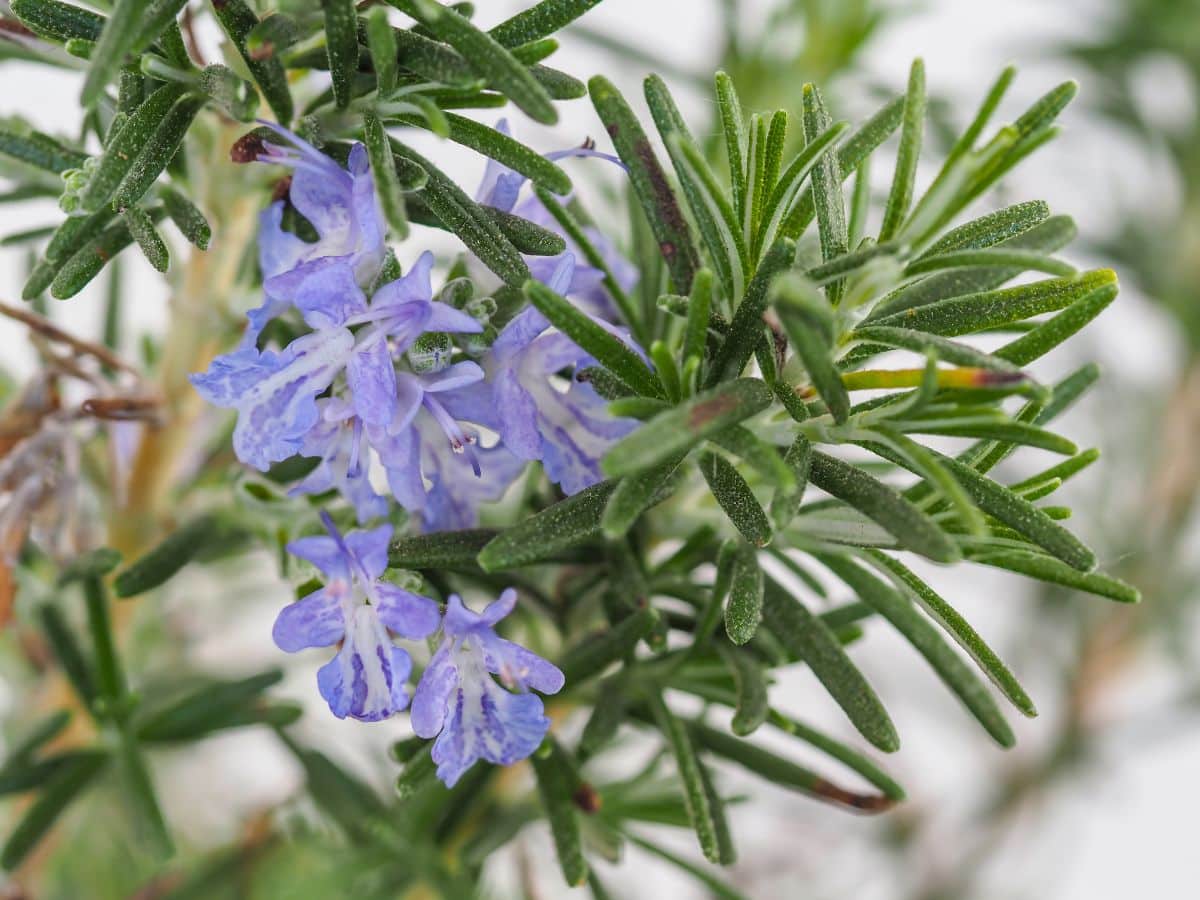
| Plant name: | Rosemary |
| Light requirements: | Full sun |
| Water requirements: | Moderate to low; prefers high humidity |
| Indoors or outdoors? | Both, can be overwintered indoors in cool climates |
| Outdoor growing zone: | Zones 8 to 9 |
Rosemary topiaries are a common sight around the holidays, but these plants can be kept as bonsais as well. Rosemary is easy to prune and shape with wire, and even better, when you snip away extra leaves, you can use them in your favorite recipes or dry them for longer-term storage! Rosemary plants also grow well inside, just as long as you provide them with enough moisture and humidity.
Rosemary grows best in full sun, and it should be watered regularly, but never allow the rosemary to sit in water since it can be prone to root rot. If you’ve ever tried to keep rosemary plants indoors before and ended up with plants with crispy, brown leaves, low humidity levels were likely the cause. To avoid this, keep humidity levels around your rosemary bonsai at between 50 and 60%.
While rosemary is a common bonsai choice, other edible herbs can work for bonsai as well, including:
- Thyme
- Bay laurel
- Lavender
- Oregano
6. Chinese elm (Ulmus parvifolia)
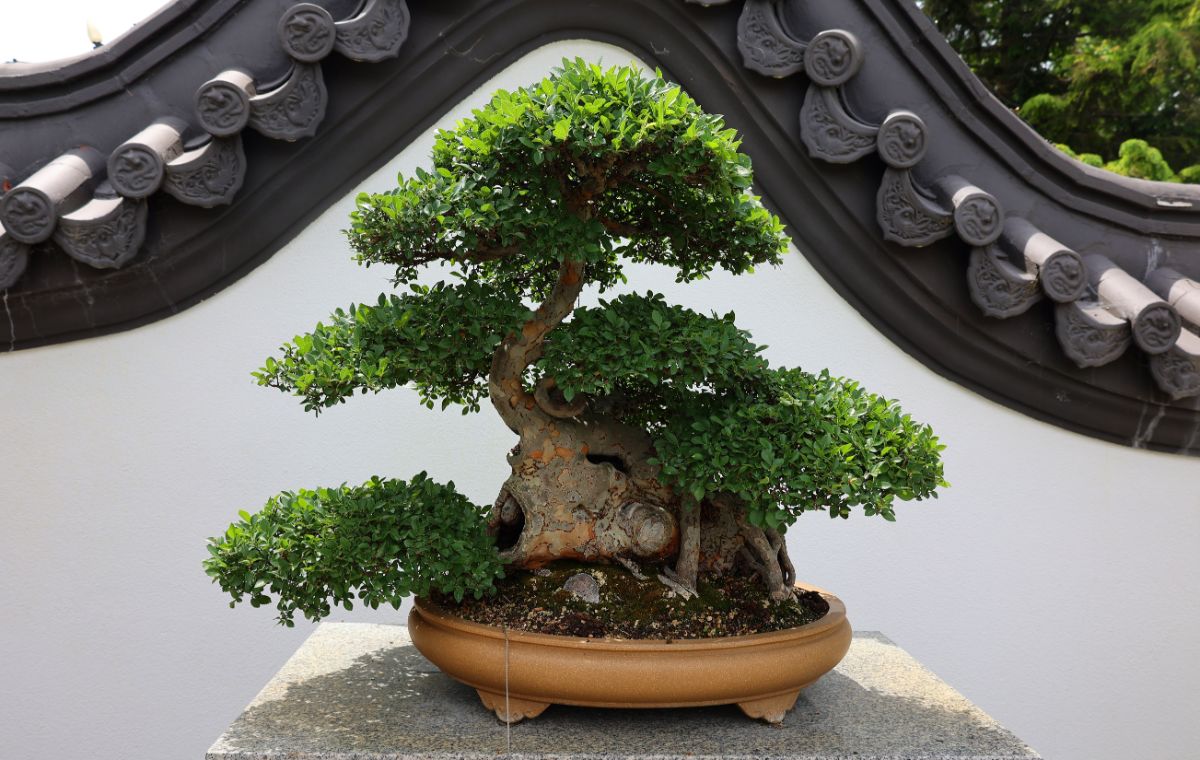
| Plant name: | Chinese elm |
| Light requirements: | Full sun to part shade |
| Water requirements: | Moderate |
| Indoors or outdoors? | Outdoors, can be overwintered indoors in cooler locations |
| Outdoor growing zone: | Zones 5 to 8 |
Chinese elm is another classic pick that is relatively easy to keep in both indoor and outdoor settings. This slow-growing plant can be overwintered outdoors in zones 4 to 9, but it can be grown inside as long as it receives enough light. If possible, locate your Chinese elm in an area that receives bright light in the morning, followed by light shade in the afternoon.
Chinese elms are easy to prune, and they don’t grow as fast as some other species, so you won’t need to prune them as often. This plant is also relatively resistant to most common pests; however, it prefers humidity levels between 40 and 60%. With adorable, tiny leaves, Chinese elm bonsais look very realistic, but since they have soft wood, wires should remain in place for a bit longer on these plants to ensure that your bonsai holds its form.
7. Juniper (Juniperus spp.)
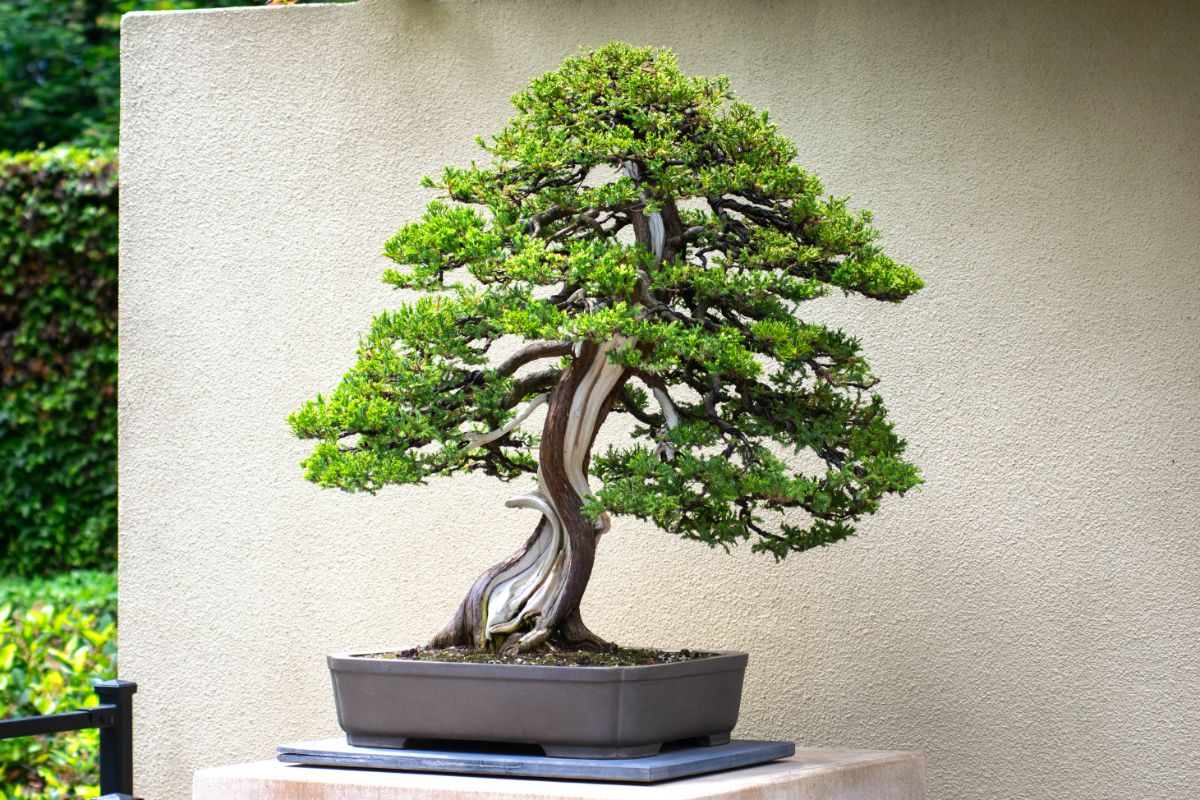
| Plant name: | Juniper |
| Light requirements: | Full sun; may benefit from afternoon shade in very hot locations |
| Water requirements: | Moderate |
| Indoors or outdoors? | Outdoors |
| Outdoor growing zone: | Zones 3 to 9 |
Juniper is an evergreen with tiny needle-like leaves and a soft green color. When pruned into bonsais, juniper looks like mini pine trees with intriguingly shaped, twisted stems and billowy clusters of leaves that look soft to the touch. What’s more, these plants can bounce back after being over-pruned, which is a common beginner mistake with bonsai.
One thing to note about juniper is that these plants won’t grow well inside, so if you want an indoor bonsai, choose a different species. The good news is that junipers are cold hardy plants that can be overwintered outdoors in zones 4 to 9. They are also resistant to most pests, although spider mites sometimes target them.
8. Jade (Crassula ovata)
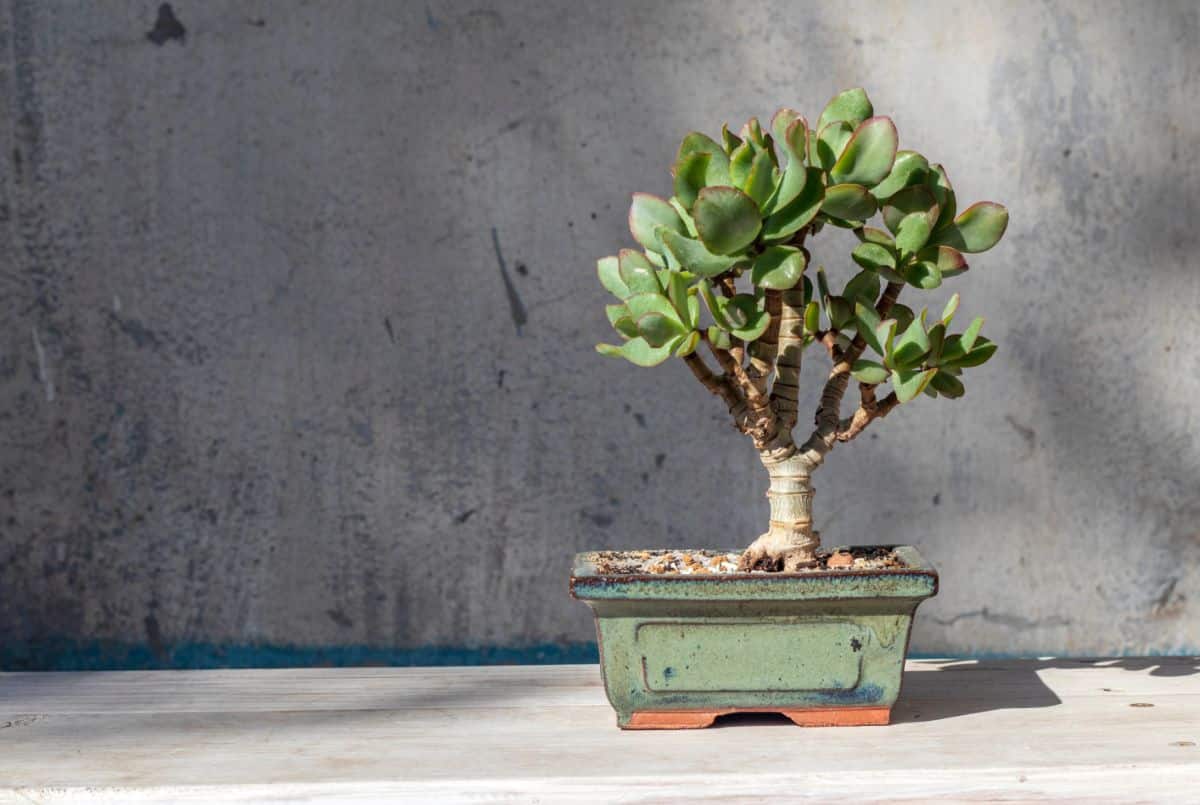
| Plant name: | Jade |
| Light requirements: | Bright light |
| Water requirements: | Low |
| Indoors or outdoors? | Indoors |
| Outdoor growing zone: | N/A |
Jades are famous for being resilient houseplants that can thrive even in the most inhospitable conditions. That makes these plants an excellent bonsai choice for anyone who is a self-proclaimed “brown thumb.” As succulents, these plants don’t need much water, and they will grow just fine even if you forget to water them for a bit.
Jades look a lot like elephant bushes, but they have slightly larger leaves. Like elephant bushes, jade has flesh stems and leaves, but the stems develop a dark bark that looks gnarled and rugged as the plant ages. Jades don’t have high humidity needs either, but you don’t want to water them too much, or they may become too top-heavy to support their own weight.
9. Azalea (Rhododendron spp.)
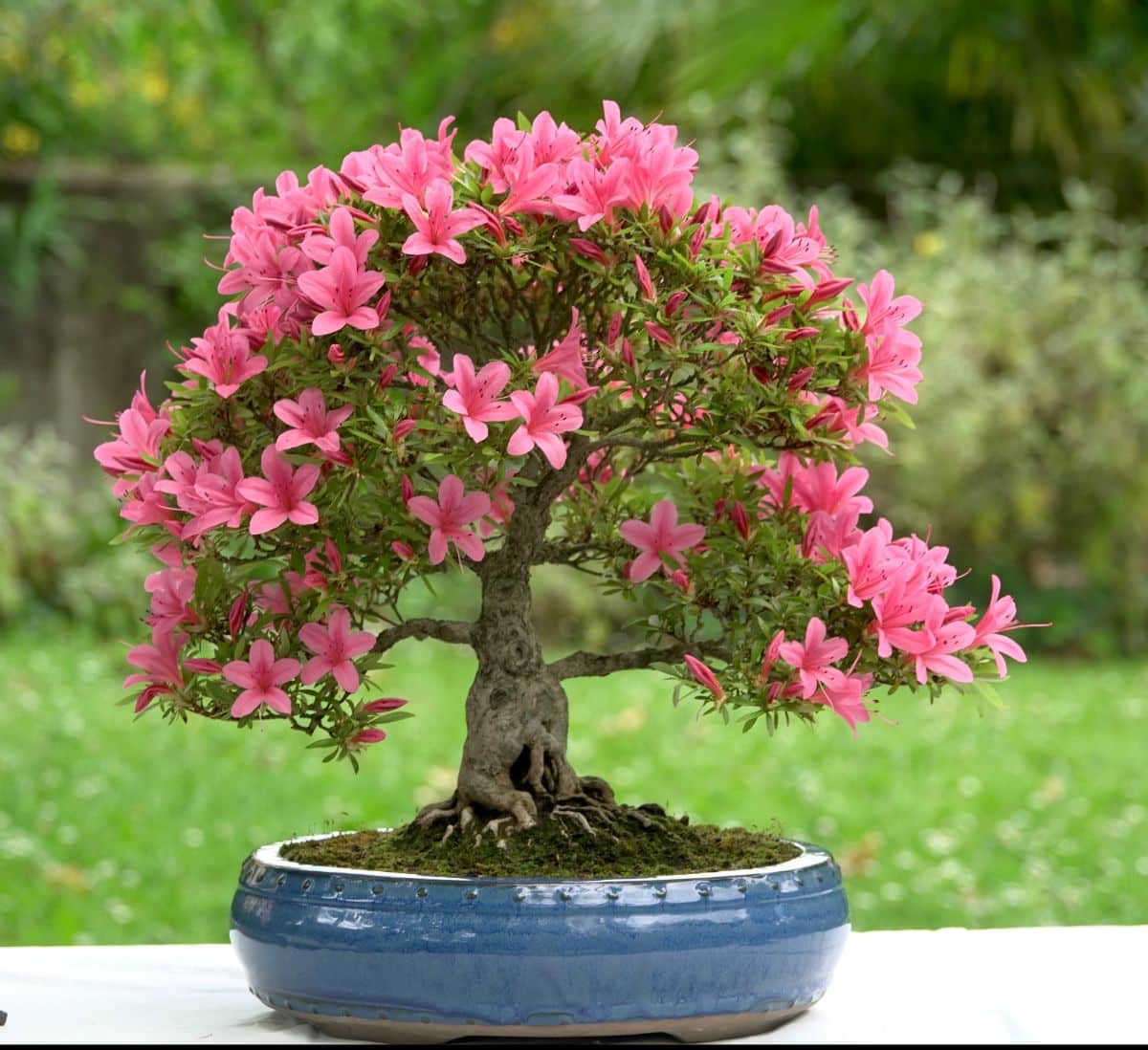
| Plant name: | Azalea |
| Light requirements: | Full sun to part shade |
| Water requirements: | High to moderate |
| Indoors or outdoors? | Outdoors, can be overwintered indoors in cooler locations |
| Outdoor growing zone: | Zones 6 to 9 |
If you like the idea of a flowering bonsai, azaleas are a must-try plant! Most varieties of azaleas bloom in spring, but you can find reblooming azalea types that will produce a second full flush of flowers in autumn. Flowers range in color from pink and purple to white, and they are very attractive to pollinators.
Azaleas don’t grow well indoors, but they will thrive in full sun to part shade locations outside. There are lots of different azalea types to choose from, but for bonsai purposes, dwarf varieties with small leaves are recommended. Cultivars like ‘Kurume’ and ‘Satsuki’ are commonly used, and they will grow beautifully in pots outdoors in zones 7 to 9.
10. Pine (Pinus spp.)
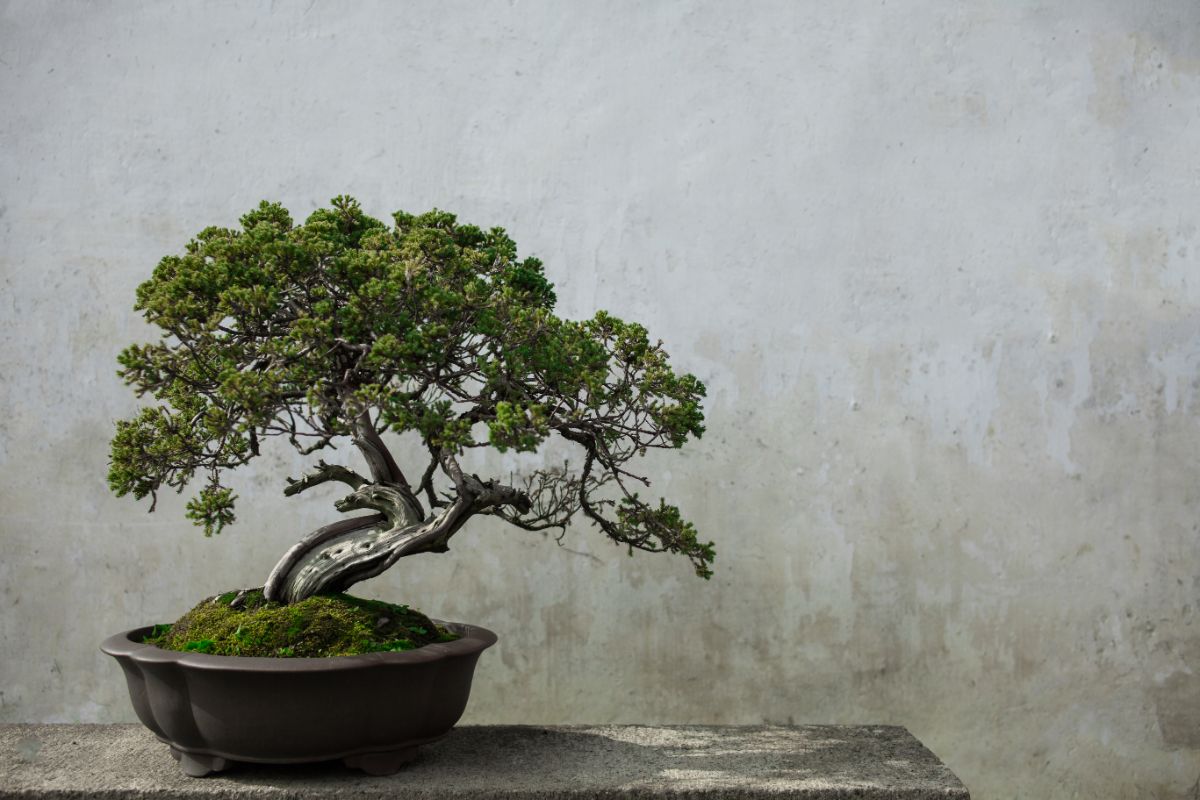
| Plant name: | Pine |
| Light requirements: | Full sun |
| Water requirements: | Moderate |
| Indoors or outdoors? | Outdoors |
| Outdoor growing zone: | Depends on species |
Different pine species can be formed into bonsais, but Japanese white pine and Japanese black pine are the most common choices. Mountain pine and Scots pine also work well for bonsai, but all of these plants will grow best outdoors. Pines do, however, tend to be a quite cold hardy, so if you live in a cooler climate, you still may be able to keep pine bonsais outdoors all year round.
Pines have needle-shaped leaves that come in bunches of 2 to 5. They also have nice, dark bark that becomes increasingly scaly and textured looking as the plant ages, which can add interest to bonsai designs. Pines can be shaped into most bonsai forms as well, but most species do require bright light to grow properly.
What do you need to get started with bonsai?
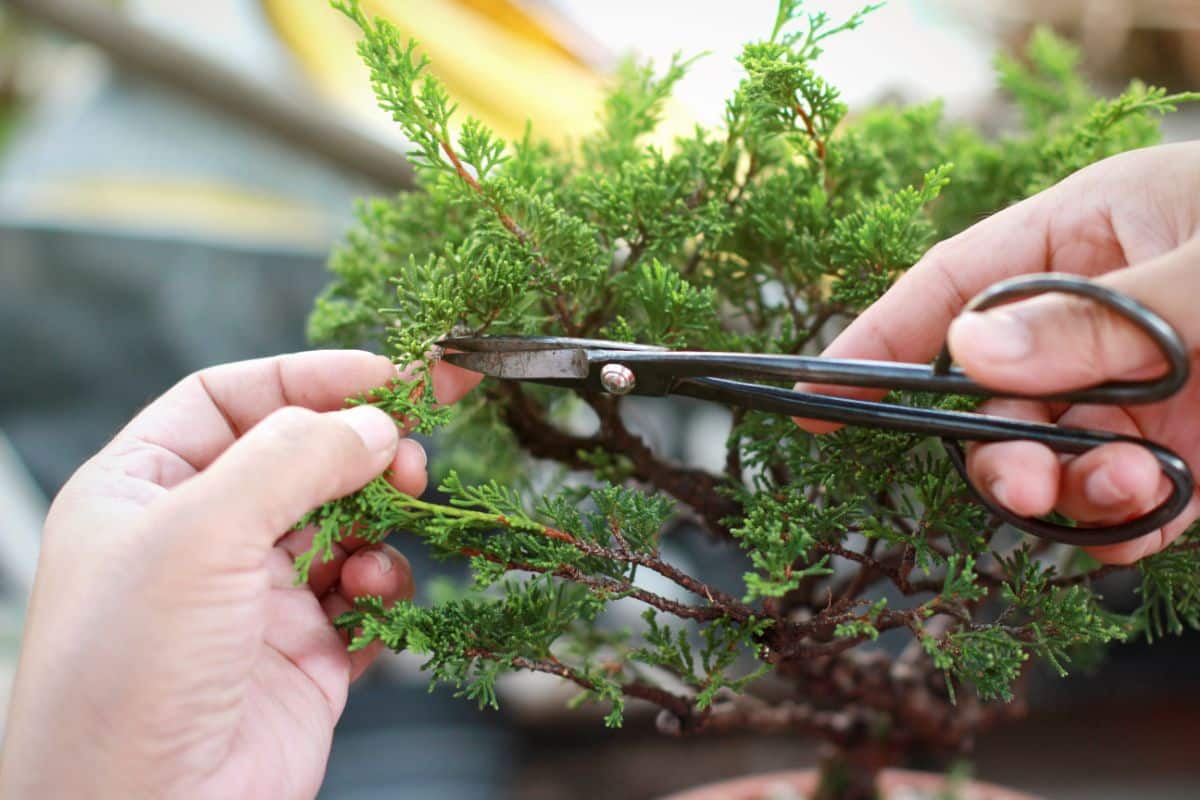
After you’ve chosen the right plant for bonsai, you’ll need to consider other necessary bonsai supplies. Although there are a lot of specialty products that you can invest in with bonsai, if you’re just getting started, you can get by with just a few simple supplies.
In addition to your bonsai plant, you will need:
- A bonsai pot.
You can find a wide variety of bonsai pots on the market, but a good bonsai pot should have both drainage holes and holes for bonsai wire. Traditional pots are made of stoneware burned porcelain or ceramic, as these pots won’t absorb water. Additionally, pots are usually about as tall as the plant’s trunk is wide.
- Potting mix.
You can purchase premade bonsai potting mixes, which usually include coconut coir and perlite, to improve drainage. While you may be able to find mixes at a local plant nursery, they are much easier to find online.
- Bonsai wire.
Bonsai wire comes in many different gauges to suit different plant sizes. This wire is used to train plants to grow in a particular way and is an essential part of bonsai.
- Pruners
While you can use garden shears on bonsai, bonsai are usually quite small, and the cuts you need to make are very precise. Therefore, investing in a good quality pair of bonsai pruners is a good idea. You can find pruners in all different shapes and sizes, but new bonsai growers probably only need one or two pairs of pruners to get started.
Frequently asked questions

The first step to creating a bonsai is to pick up the right materials that you’ll need to shape your miniature tree. That means you’ll need to find an appropriately sized pot, as well as wires and pruners. And, of course, you’ll want to pick up a beginner-friendly bonsai plant to work with!
Generally speaking, most bonsai keepers agree that the easiest bonsai style to begin with, is Chokkan or formal upright. This style can be used with many different plants, but it works particularly well with pines and junipers.
Yes, most plants can be shaped into bonsai with careful pruning and a bit of patience. Trimming a plant’s roots will keep the plant smaller, and choosing an appropriately sized pot will help too. Some plants are easier to keep as bonsai due to their adaptability, low watering needs, and how they respond to pruning.
Owning a bonsai is not necessarily difficult, but it does require consistency. Like other plants, bonsais will need to be cared for, watered, and fertilized on a regular basis. It’s also important to prune your plants as needed so they don’t become overgrown and difficult to shape.
The first rule of bonsai is to always consider the health of your bonsai plant first. While you may want to prune away more leaves, if it risks your plant’s health, err on the side of caution and put away your pruning shears!
Different plants have different watering requirements, so you will need to water your bonsai based on the variety of plant that you’re growing. Most bonsais should be watered approximately once a week, but that may vary. Succulents, like jades and elephant bushes, should be watered less often.
Summary
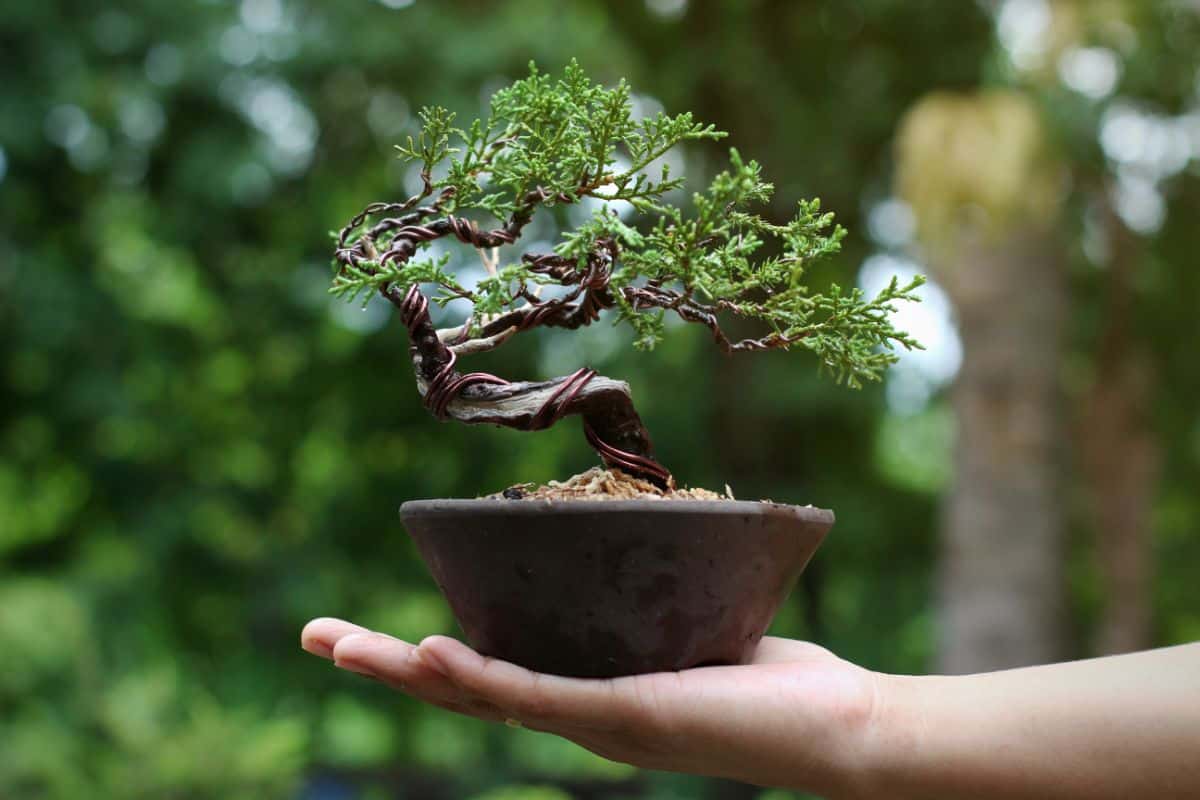
Whether you grow them inside or out in your garden, bonsais add elegance and style to any setting. These traditional art forms are a test of a gardener’s patience and skill, but bonsai also provides an opportunity to express your own creativity and to meditate on the natural forms of the plants you’re working with.
When you begin working with bonsai, you may find yourself studying plants with a new and more trained eye. How do pine trees grow in nature? What makes a tree look like a tree, exactly?
These ideas sound simple, but understanding the natural growth habit of plants is critical for growing a realistic bonsai plant that will reward you for many years to come. So if you need inspiration for your bonsai, take a walk in nature or study the trees in your yard with a bit more care. You’ll be surprised how much you can learn about bonsai just by working with the plants that are already around you!

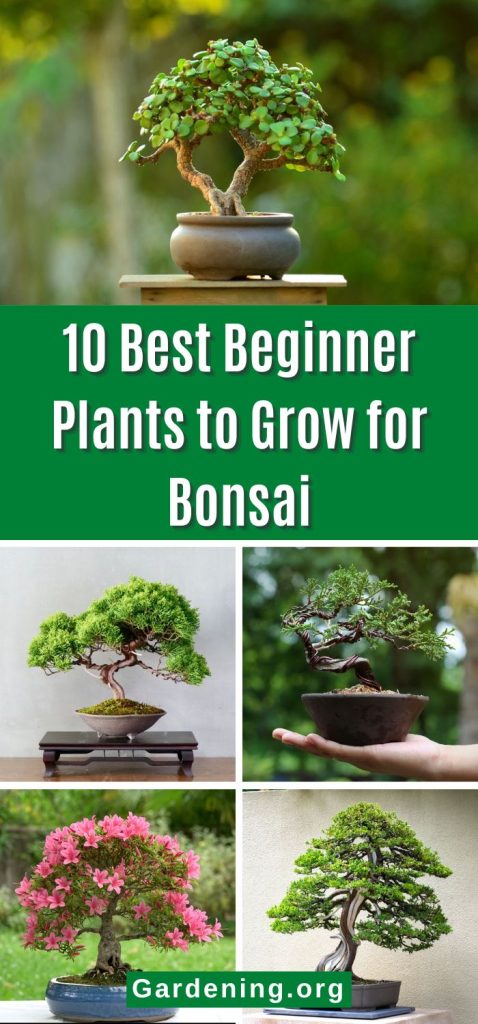
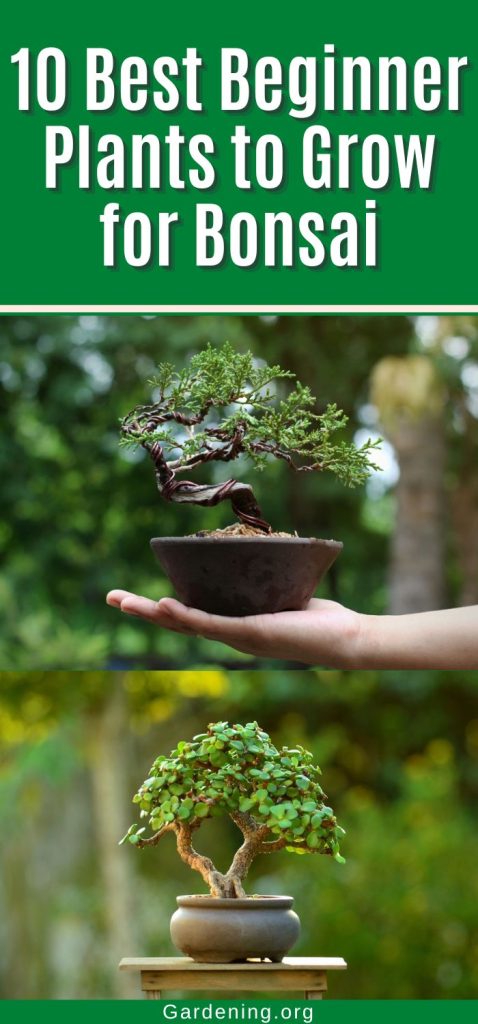
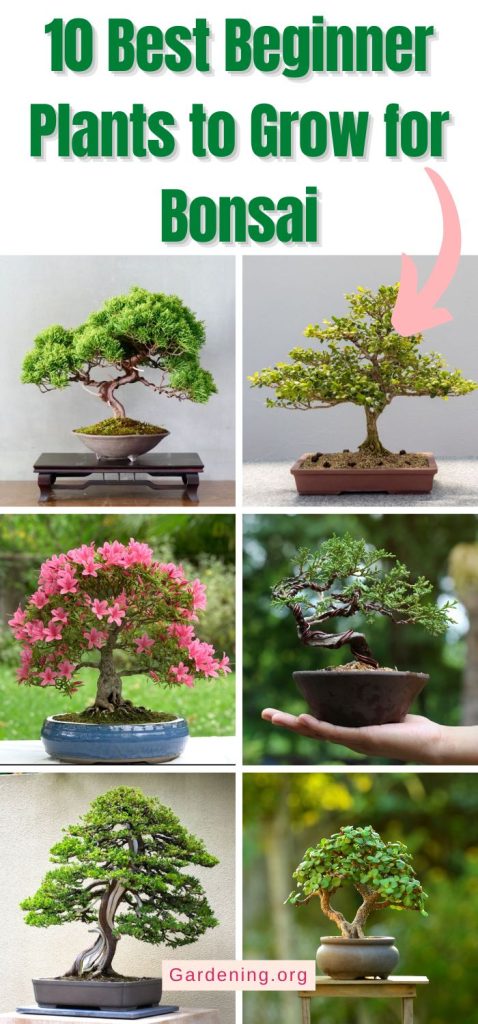
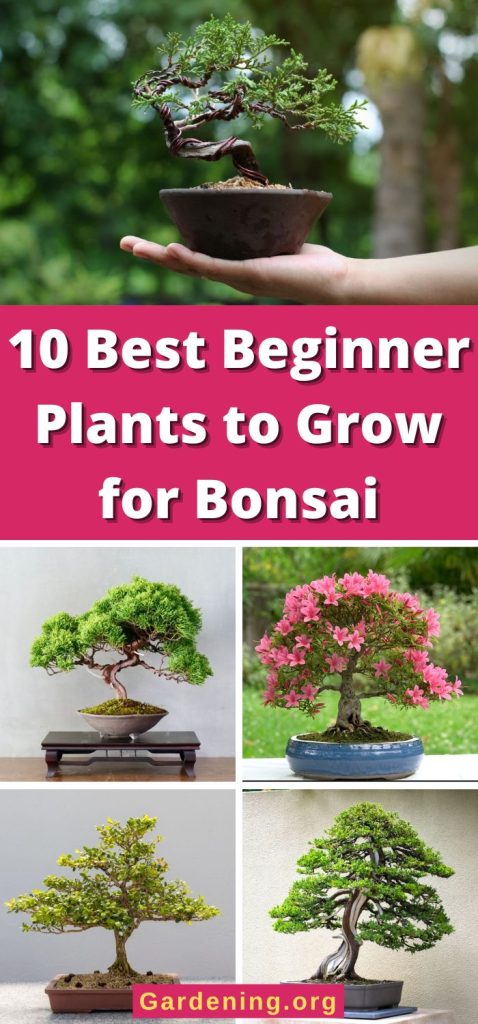
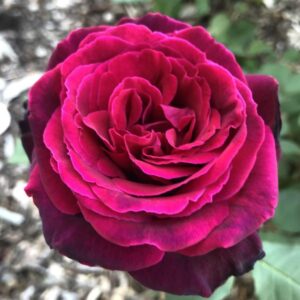
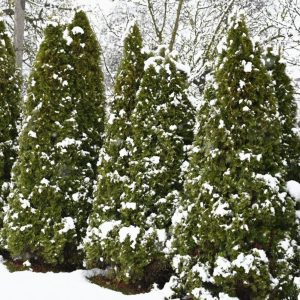


Leave a Reply